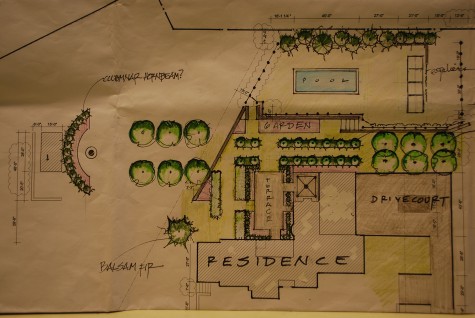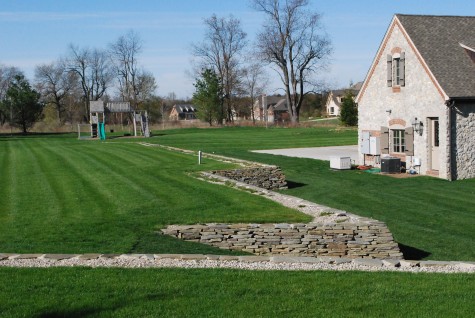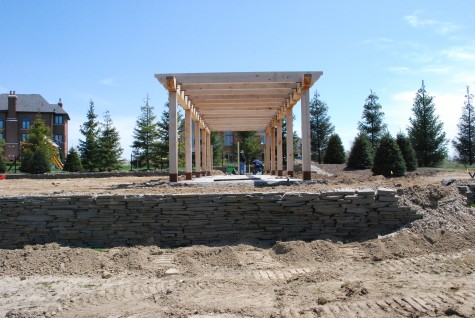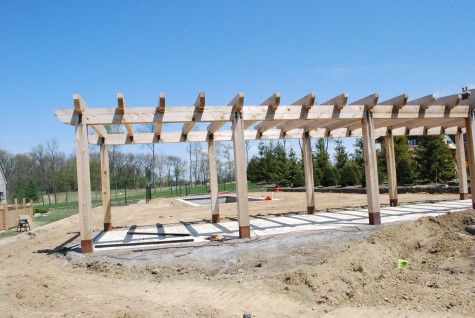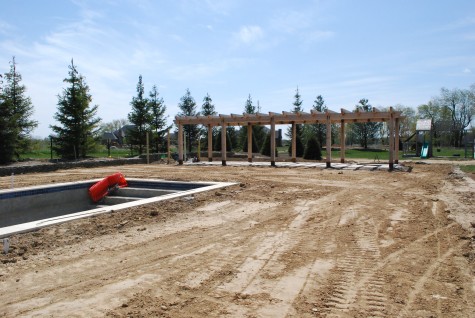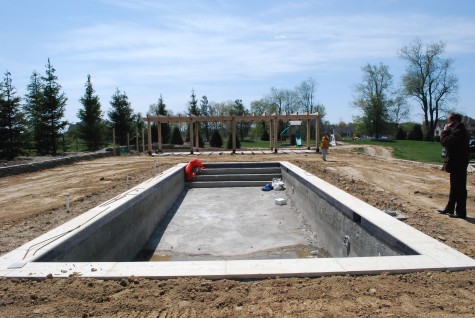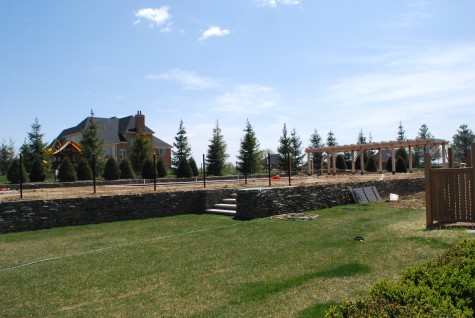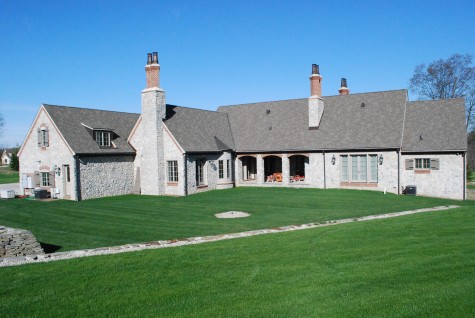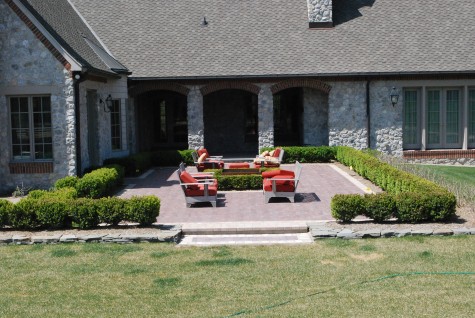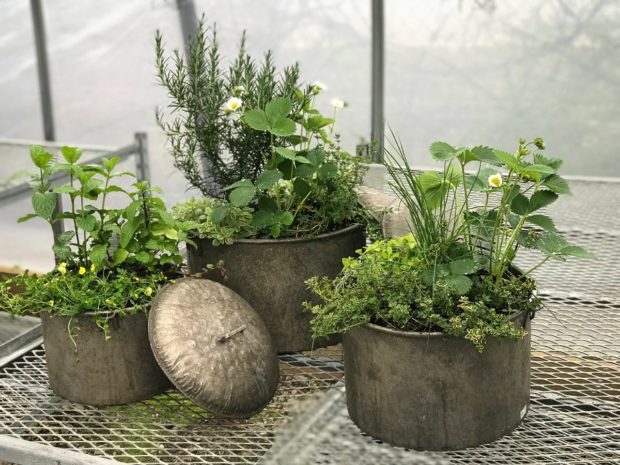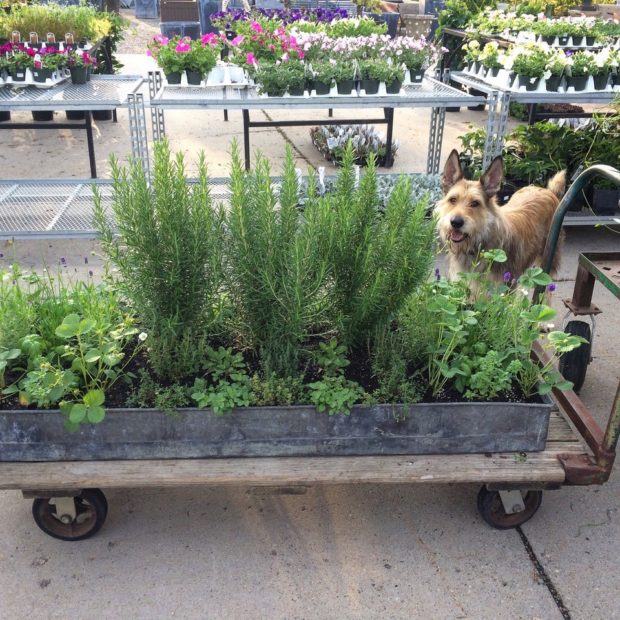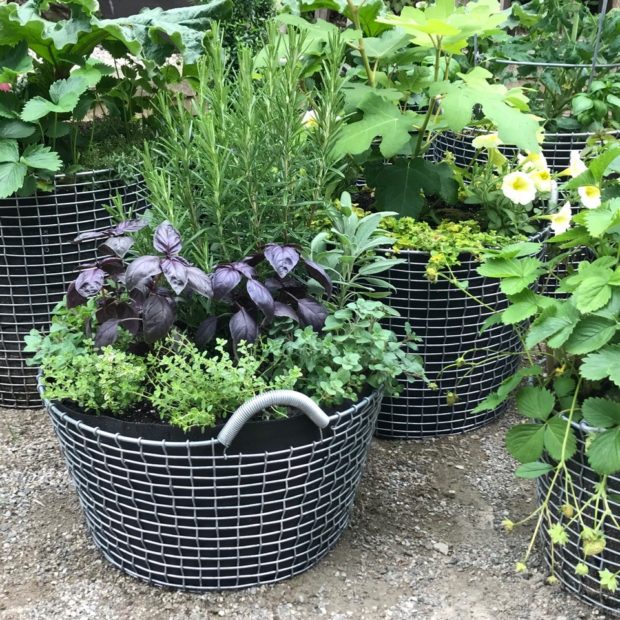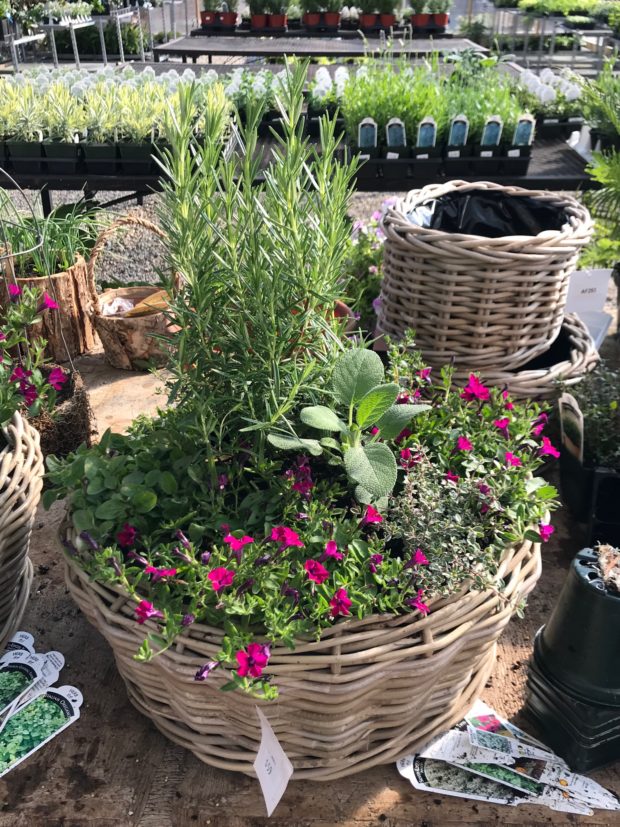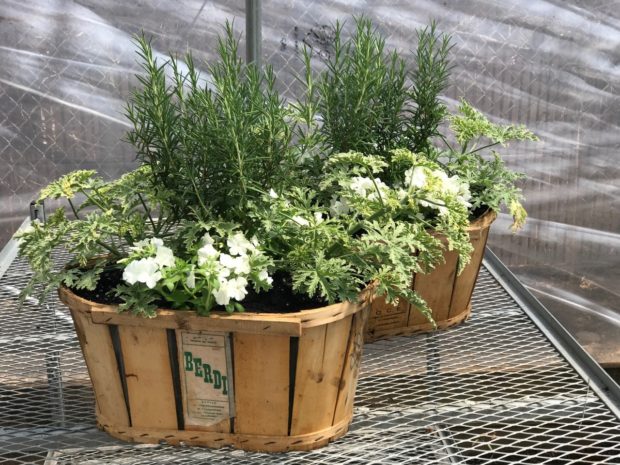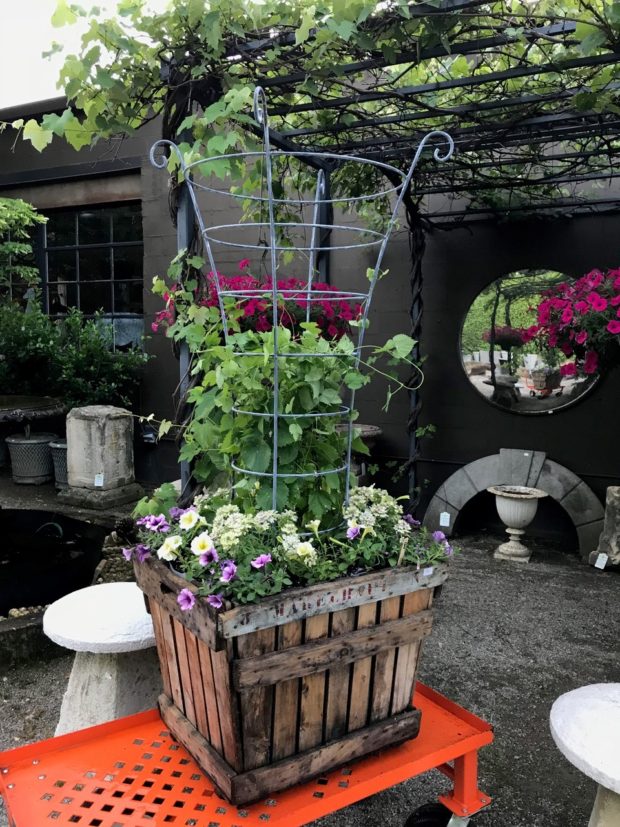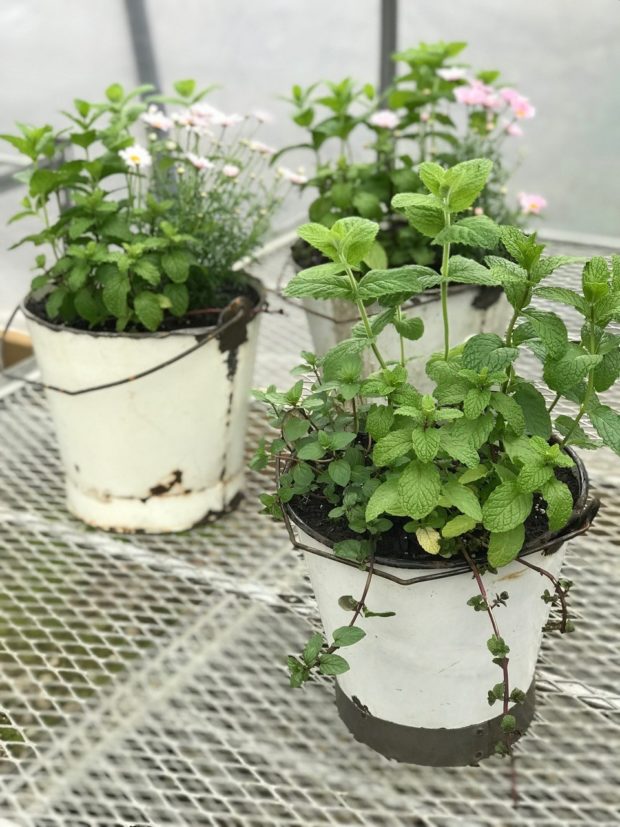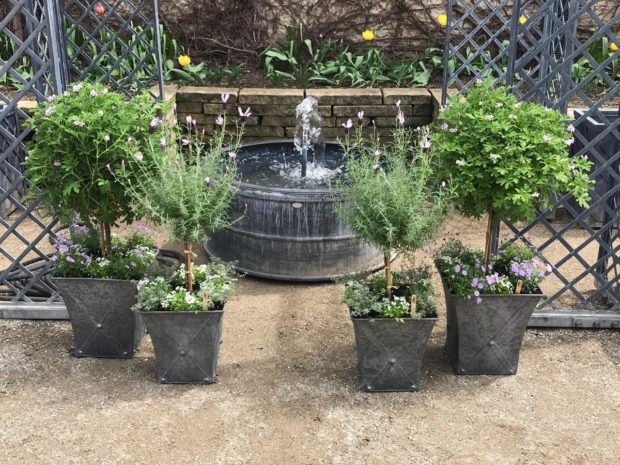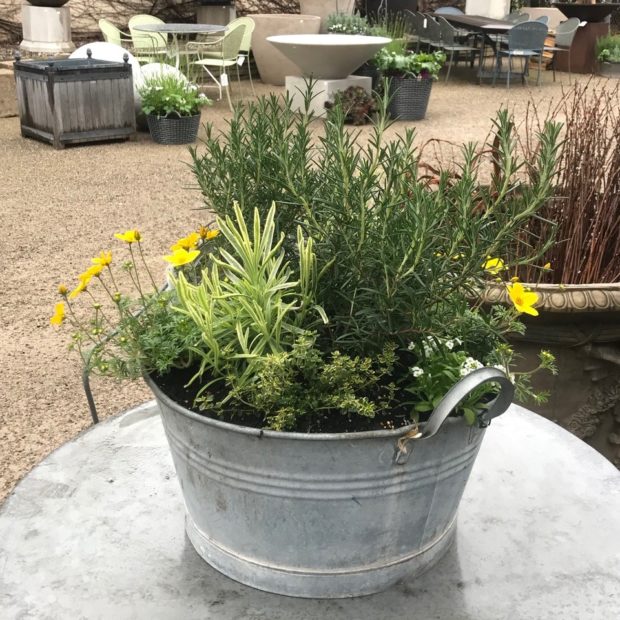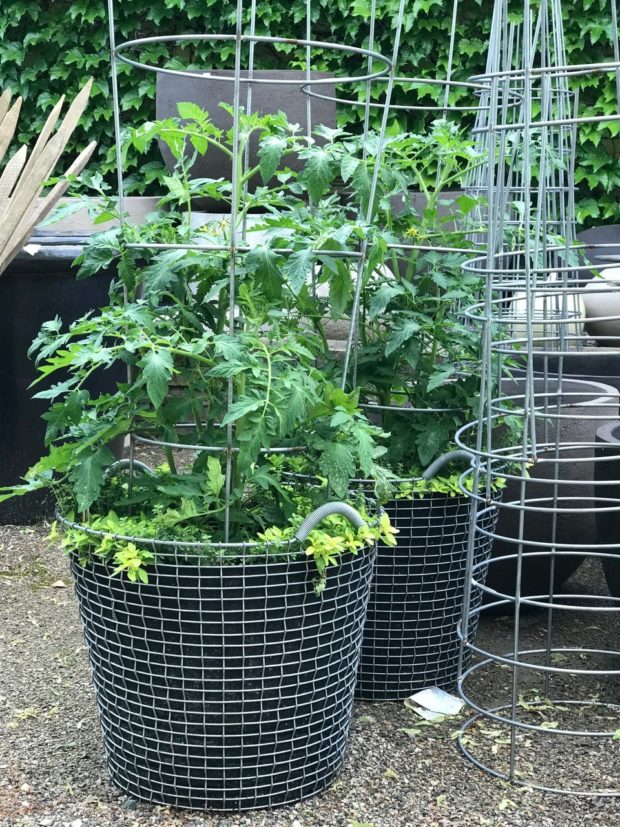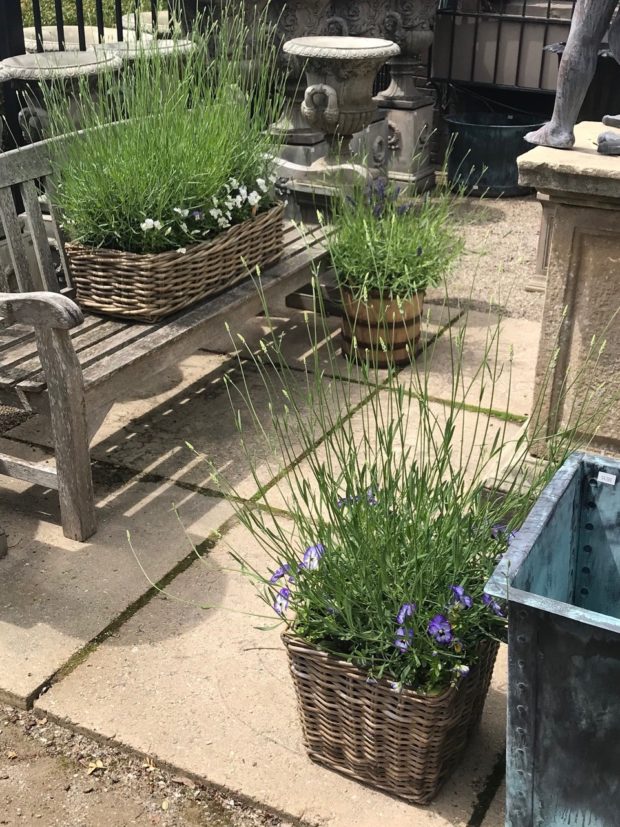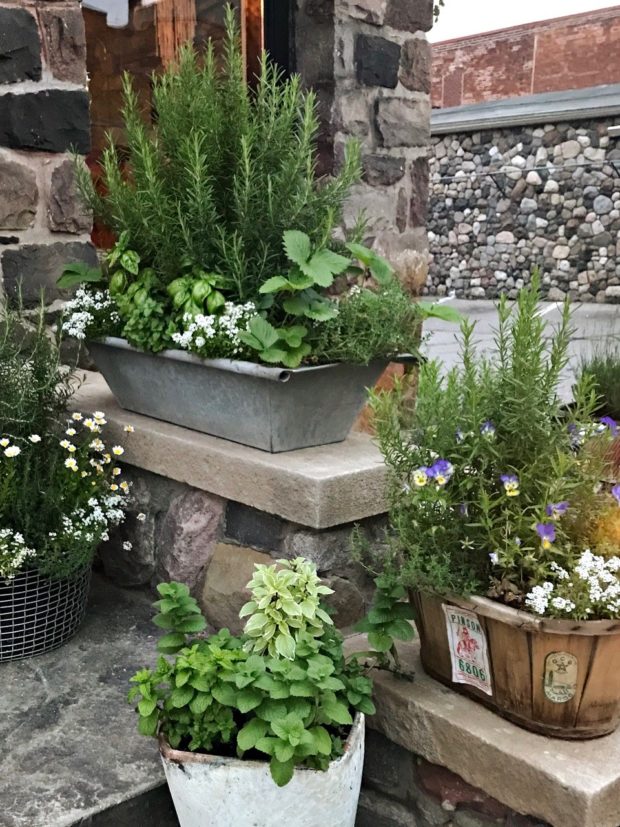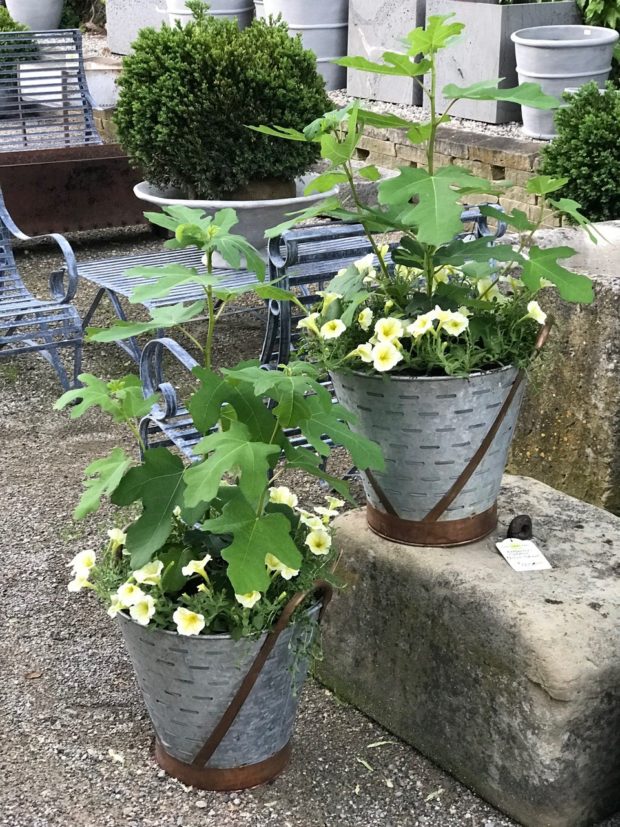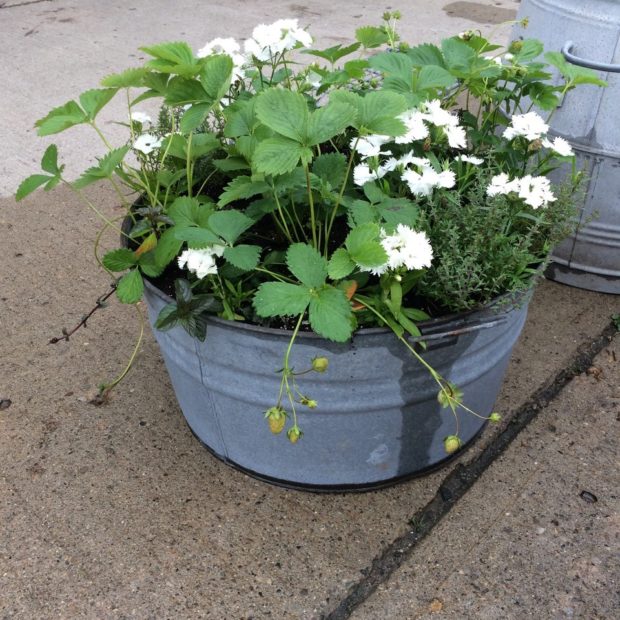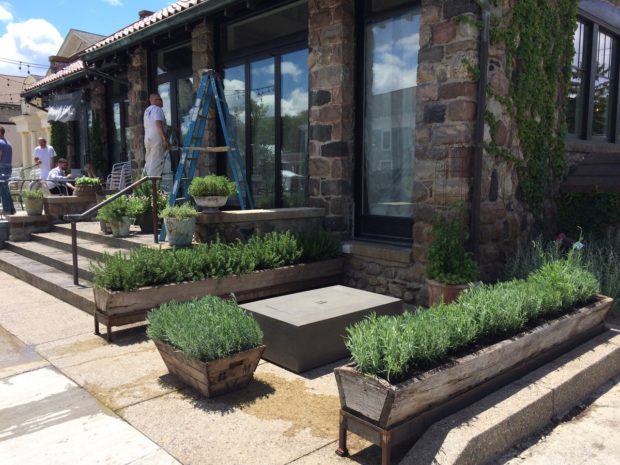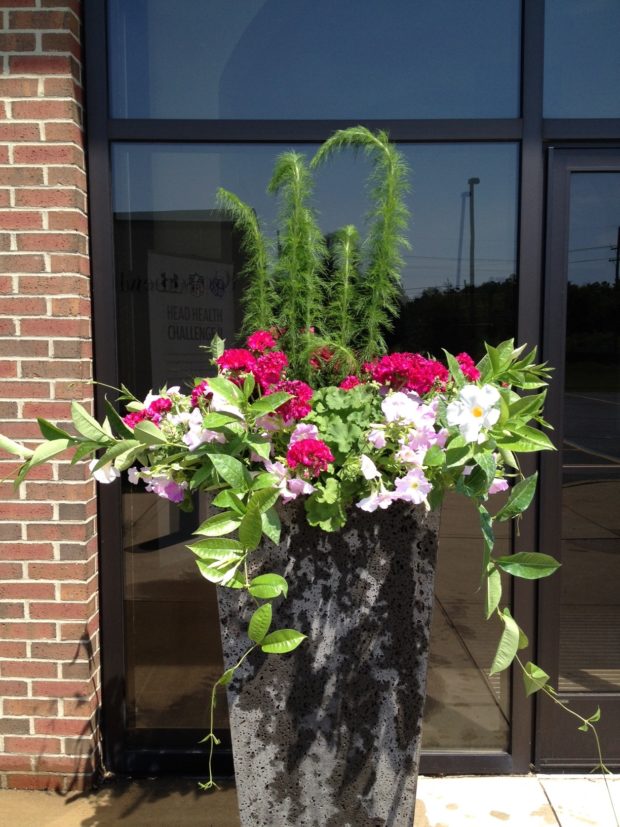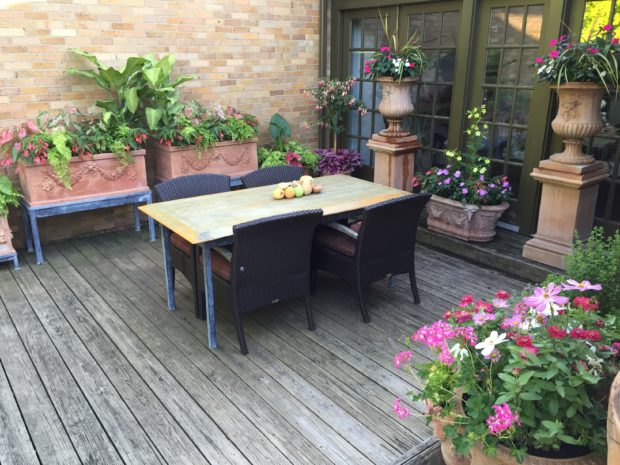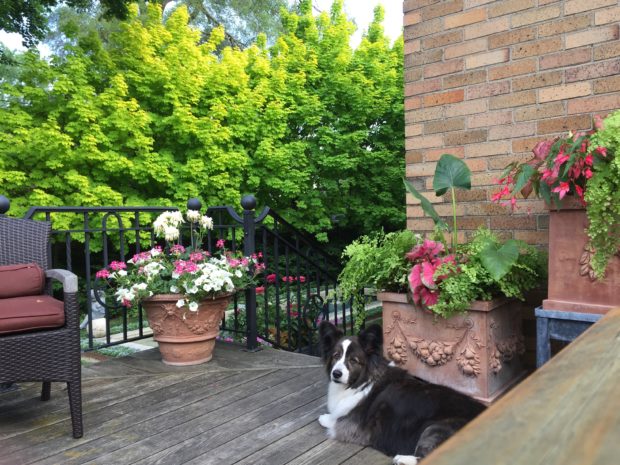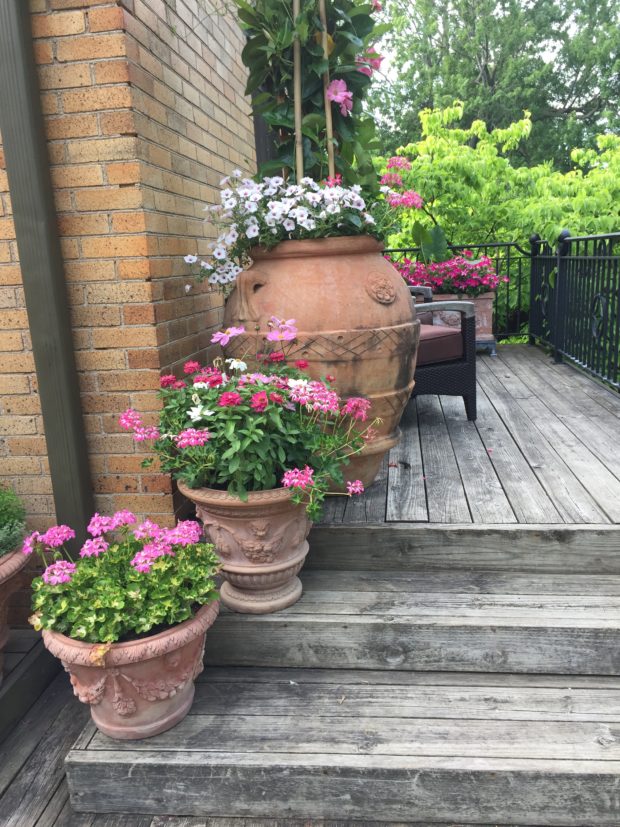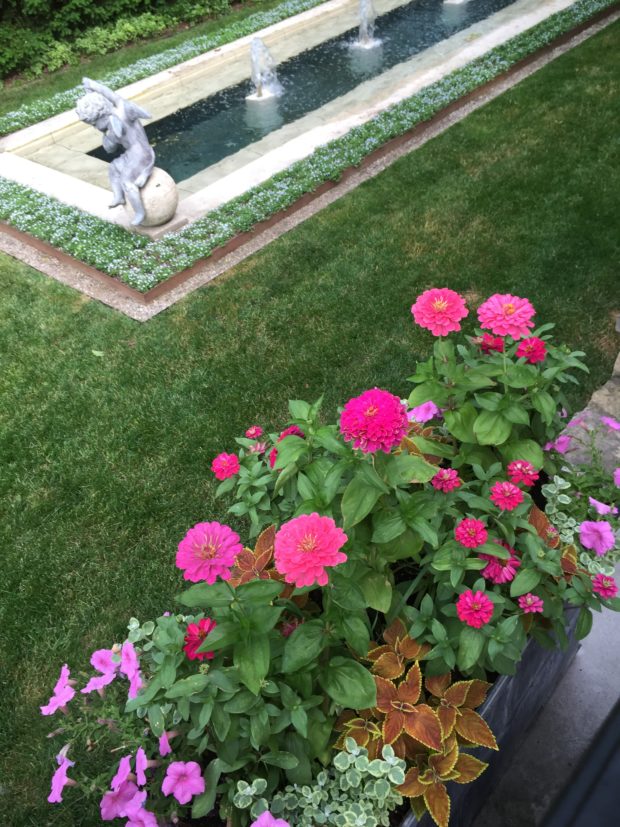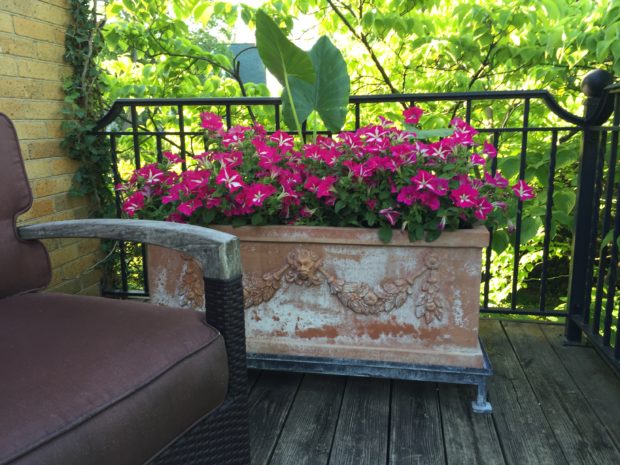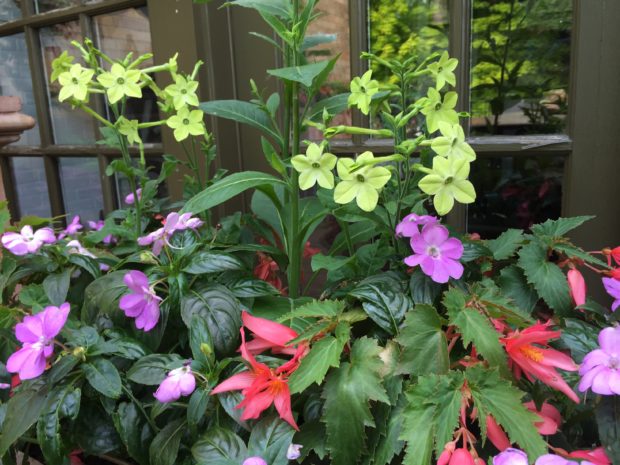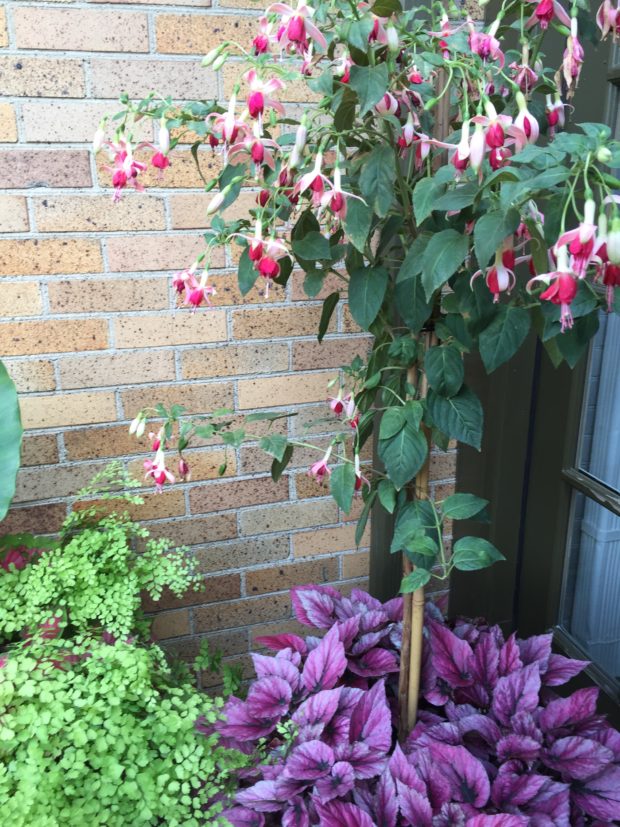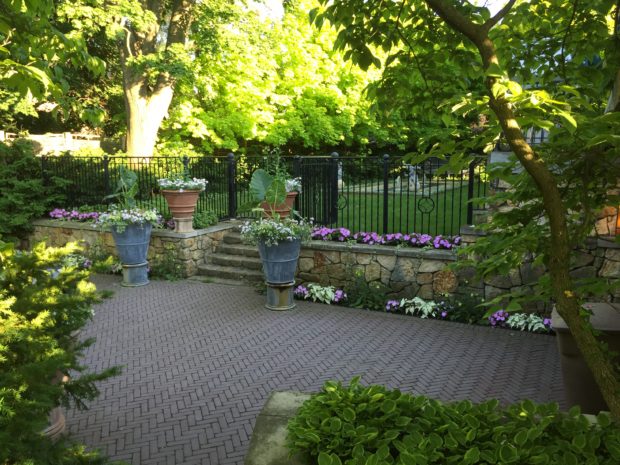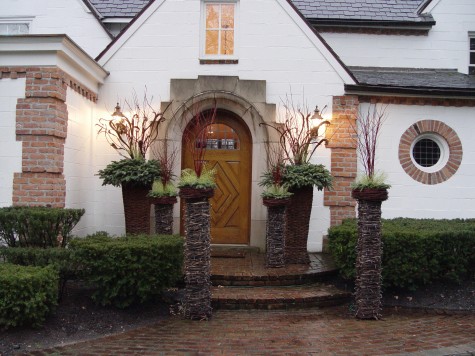 This sassy arrangement of winter pots reminds me much of the client to whom they belong. She has an eye all her own, and doesn’t mind using it; this makes it easy to design for her. Tall thin woven planters make a forest of the porch. The distinct curving silhouette of the fantail willow makes a saucy statement up top in the large willow baskets. Four smaller roughly woven grapevine planters get a topping of twigs, chubby grapevine wreaths and chartreuse netting. Smashing.
This sassy arrangement of winter pots reminds me much of the client to whom they belong. She has an eye all her own, and doesn’t mind using it; this makes it easy to design for her. Tall thin woven planters make a forest of the porch. The distinct curving silhouette of the fantail willow makes a saucy statement up top in the large willow baskets. Four smaller roughly woven grapevine planters get a topping of twigs, chubby grapevine wreaths and chartreuse netting. Smashing.
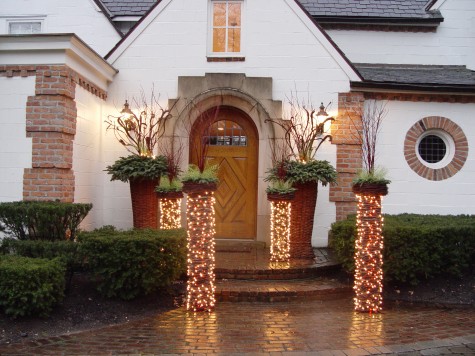 Lighting the twig baskets themselves is unexpected and very effective. Multiple strings of mini lights with brown cords make it clear even during the daytime, that strong seasonal lighting can create a special look all its own. This big dose of lighting fun can’t help but make one feel better.
Lighting the twig baskets themselves is unexpected and very effective. Multiple strings of mini lights with brown cords make it clear even during the daytime, that strong seasonal lighting can create a special look all its own. This big dose of lighting fun can’t help but make one feel better.
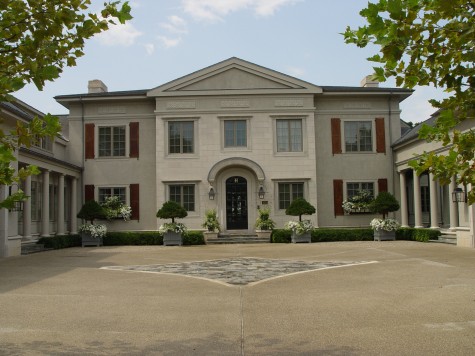 The summer plantings in these boxes, and pots are a welcome contrast to the stark and edited landscape. This picture makes me sigh just looking at it-this garden moment is a memory now.
The summer plantings in these boxes, and pots are a welcome contrast to the stark and edited landscape. This picture makes me sigh just looking at it-this garden moment is a memory now.
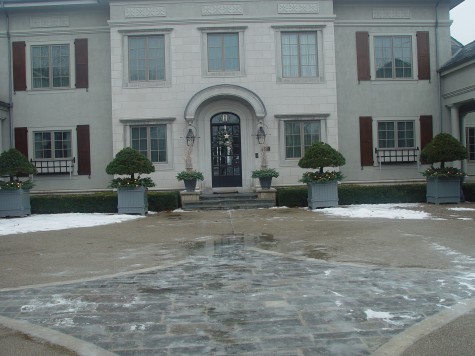 The winter demands a whole new set of materials. The effect is more formal, and more subtle. The landscape still looks finished, even though the garden has gone down. Having the energy to pursue a project at its end with the same energy evident that I had at the start has much to do with the success of a design.
The winter demands a whole new set of materials. The effect is more formal, and more subtle. The landscape still looks finished, even though the garden has gone down. Having the energy to pursue a project at its end with the same energy evident that I had at the start has much to do with the success of a design.
 The lighting adds a dimension that responds to the fact of our quiet and dim winter season. Is there a need to give in-not so much.
The lighting adds a dimension that responds to the fact of our quiet and dim winter season. Is there a need to give in-not so much.
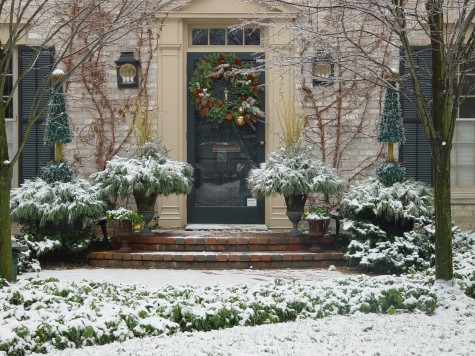 The quiet and graceful arrangements in these containers rely on an interplay of color and texture. The subtle reverie of pale blue eucalyptus and yellow twig dogwood contrast with the highly textured white pine. The dusting of snow is so beautiful. Weather plays just as important a role here as it does in the greater landscape.
The quiet and graceful arrangements in these containers rely on an interplay of color and texture. The subtle reverie of pale blue eucalyptus and yellow twig dogwood contrast with the highly textured white pine. The dusting of snow is so beautiful. Weather plays just as important a role here as it does in the greater landscape.
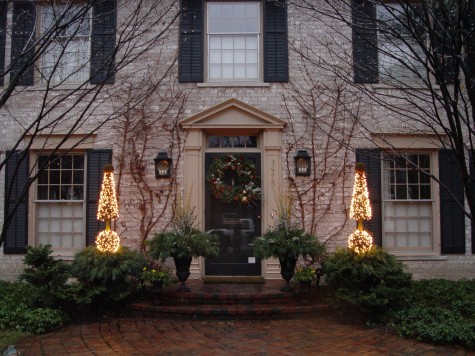 The lit topiary sculptures make another statement all together. Dressed for an evening out, these topiaries have the added bonus of bathing the entire porch area in a warm winter glow.
The lit topiary sculptures make another statement all together. Dressed for an evening out, these topiaries have the added bonus of bathing the entire porch area in a warm winter glow.
 The transition from fall to winter can be a bleak one. This old finial looks chilly, now that the leaves have dropped from the lindens.
The transition from fall to winter can be a bleak one. This old finial looks chilly, now that the leaves have dropped from the lindens.
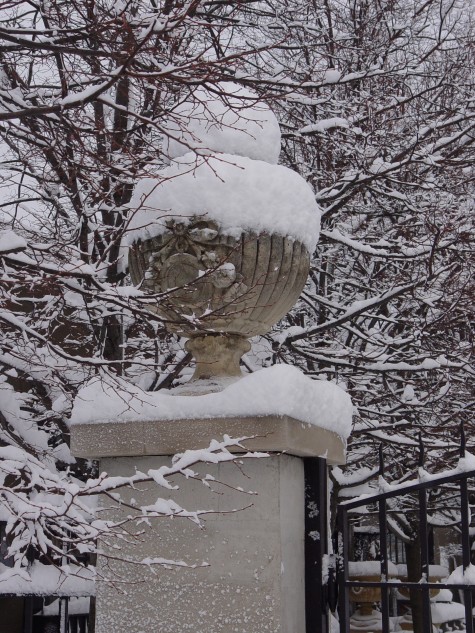
Fortunately nature has a way of providing her own special brand of winter light. The white snow catches and reflects all the available light however litlle there might be-even at night. Though I have been known to complain about the 6 months I have to spend gardening alternatively, in truth I would not give this season up. The snow cloche-lovely.

